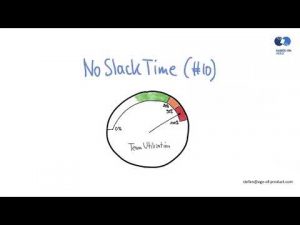By Eduardo Briceño
Mistakes may be useful, but aren’t some less desirable than others? And doesn’t high performance—something most of us aspire to—mean making fewer mistakes? Rather than making blanket statements about mistakes being all good or all bad, it is helpful to differentiate between different kinds of mistakes and clarify which mistakes we want to pursue and how, and which mistakes we want to try to avoid.
Sloppy mistakes
Your heart seizes up when you see what just happened. You “replied all” to your entire company when you meant to write back to just your colleague Kim, with whom you were sharing a cute cat video. One by one, the replies start rolling in. Including one from your boss.
Congratulations! You have just made a sloppy mistake.
Sloppy mistakes happen when you’re doing something you already know how to do, usually because you lose concentration or you’re focused on the wrong thing. We all make sloppy mistakes because we’re all human. However, when you make too many of these mistakes, especially on a task you intended to focus on, it signals an opportunity to enhance your focus, processes, environment, or habits. My sloppy mistakes frequently come from focusing intently on one task, which results in collateral damage in the periphery. This might mean breaking the occasional glass because I am too focused on solving a work problem and not paying enough attention to my surroundings.
We might be tempted to conclude that sloppy mistakes offer few learning opportunities; after all, we don’t want to fret over every little blunder. But since even sloppy mistakes can have serious consequences, any time we make one, it makes sense to pause and reflect.
In leading team meetings, one sloppy mistake I have made is failing to pay enough attention to the dynamics within the group, the balance of who is talking, or any interpersonal tensions. When I discovered that was happening often, I had to identify what to try differently. I began taking two minutes before meetings to think about the people I was meeting with and my objectives for the meeting, and to remind myself that, as a leader, my job was to facilitate the development of an effective team, rather than focus intently on solving the problem at hand.
The next time you make a sloppy mistake, ask yourself, “Is this important to me? Do I want to change something so this doesn’t happen again? If so, how can I adjust my focus to avoid making this type of mistake in the future?”
‘Aha-moment’ mistakes
Aha-moment mistakes happen when you do something as you intended, but realize it was the wrong thing to do. At that moment, you have a powerful realization—an aha!—a strong, new insight that expands your understanding and awareness.
You installed a rainwater harvesting system as you intended, but then realize that such projects need mechanisms for maintenance.
These kinds of mistakes can be hard to spot and can go unnoticed, even over a lifetime. How many leaders continue to do something that frustrates the people they lead—sometimes for years—while remaining unaware of the effect of their actions because they never solicit or otherwise receive feedback?
I used to be in the habit of emphasizing important comments my colleagues made by repeating their remarks in my own words and explaining why I thought they were significant. Eventually, I learned that I may have been making my colleagues feel I was trying to take credit for their ideas, or implying that their voices would not be heard unless a man in a position of power repeated what they said. I could have done a better job soliciting feedback and fostering psychological safety so that others might have spoken up, and I would have learned the lesson sooner.
These aha moments can occur in a wide variety of work situations. A salesperson can’t seem to close a deal—until a colleague overhears her and tells her to slow down and take time to understand her customer’s needs. A project manager realizes that her team keeps missing due dates, so she builds in a timeline confirmation step for every milestone, and makes sure to give people the opportunity to ask for more time if they need it.
The signal to pay attention and reflect comes when you are surprised by the effect of your actions. You do something expecting X, but Y happens instead. That’s a cue to move into the Learning Zone and identify what is surprising and what lessons it might teach you. Surprises are precious sources of learning, and they make life more interesting.
Stretch mistakes
Whenever you’re working to expand your current abilities and try something new, you’re bound to make some errors along the way. These kinds of stretch mistakes are positive—a sign you’re growing. If you never make stretch mistakes, it means that you’re never truly challenging yourself.
When you find yourself making and then repeating a stretch mistake, it’s a good opportunity to explore whether you’re mindlessly going through the motions or truly applying yourself to improving your abilities. If you practice throwing a Frisbee and it keeps taking a nosedive, it’s time to change your technique or seek out some tips to make that Frisbee sail through the air.
Other times, your approach to learning itself may be ineffective. You might be experimenting when deliberate practice would be more effective for acquiring the desired skill. In such instances, you might ask how others have gained competence in the same or a similar area. If you’re concentrating and still feeling stuck, it might be time to bring in a coach, a mentor, or another source of guidance and objective feedback.
It also could be that you’ve simply set your stretch goal too high. Could you aim instead for some milestone between where you are today and your ultimate goal?
Say you try to put together a conference and it fails miserably. You could, upon reflection, gather the lessons learned and try again, perhaps bringing to the team people with expertise in areas that fell short. Or you could recognize that you know too little about too many aspects of what is involved, and instead set a goal of organizing a smaller internal meeting that doesn’t involve as many activities you haven’t done before. That way, you can focus on learning some of the elements that will prepare you to later expand to a full conference.
You want to seek out stretch mistakes by taking on new challenges. But when you find yourself stuck and can’t seem to make progress, it’s time to reflect, identify a different strategy, and then adjust your approach to practicing.
When you meet your goal, it’s time to identify a new area of challenge and continue stretching yourself.
High-stakes mistakes
While mistakes can help you grow, some errors are undeniably dangerous. After all, no one wants the person in charge of security at a nuclear power plant or the captain of an aircraft to be making sloppy mistakes. Nor do you want to force employees to do a teambuilding activity that could lead to injury.
Luckily, you can put processes in place to try to minimize high-stakes mistakes, and over time, you can develop an intuitive understanding of when to take risks and when to play it safe.
Aside from life-threatening or potentially dangerous situations, there are many Performance Zone activities you might consider high stakes. A championship final can certainly be considered a high-stakes event for a sports team that has trained for years. Or if losing an important customer relationship could result in a significant drop in revenue, you might want to play it safe in meetings with that customer rather than experiment with risky ideas.
It is okay to see these events as performances rather than learning opportunities and to seek to minimize mistakes and maximize short-term performance. These are the moments you may want to focus on harvesting dividends from the time spent in the Learning Zone.
Even then, we can often embed low-stakes mini experiments that don’t involve safety concerns within high-stakes events. For example, if you’re doing a presentation with an important customer who loves classical music, you might somehow incorporate that into your presentation, and then reflect on whether it had an impact. That could mean anything from including cello music during the breaks to using classical music metaphors in the presentation itself.
The possibilities are endless when it comes to what you could test. Here are a few examples:
In a high-stakes event, if you don’t achieve your goal of winning the championship or the customer, you can reflect on the progress you’ve made through time, on the approaches that have and haven’t helped you grow, and on what you can do to grow more effectively.
On the other hand, if you achieve your goal, win a championship, or land new business, that’s great. Celebrate the achievement and how much progress you’ve made. Then, ask yourself the same questions to keep stretching. Continue engaging in the Learning Zone, challenging yourself, and growing your abilities.
Excerpted from The Performance Paradox: Turning the Power of Mindset into Action by Eduardo Briceño. Copyright © 2023 by Growth.how LLC. Excerpted by permission of Ballantine Books, an imprint of Penguin Random House LLC. All rights reserved. No part of this excerpt may be reproduced or reprinted without permission in writing from the publisher.
Eduardo Briceño is a global keynote speaker and facilitator who guides many of the world’s leading companies in developing cultures of learning and high performance.
(2)







